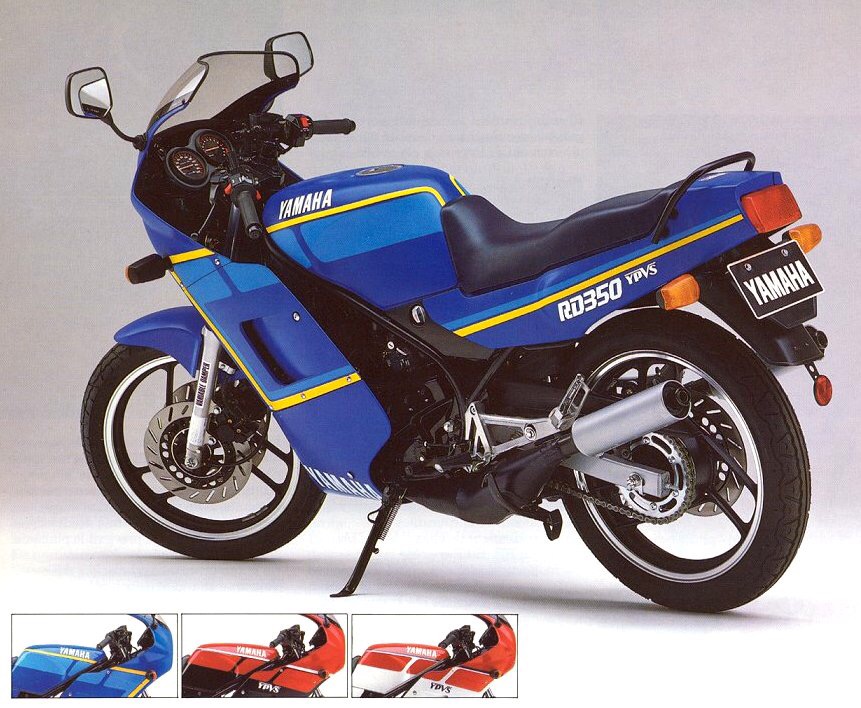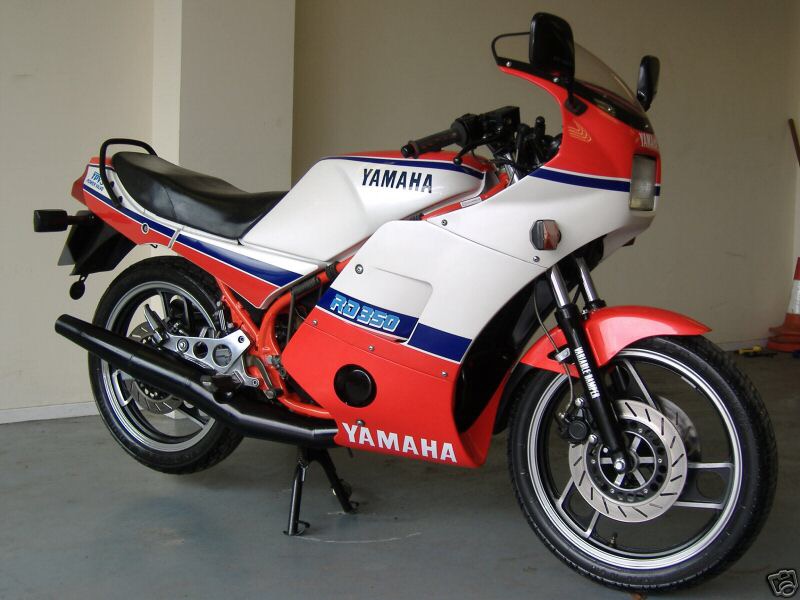The following is a re-edit of a piece posted by MotorMartin on DriveTribe under The Junk Yard banner run by Tony Yates, perhaps better known as @Xinterceptor.
Back in the early eighties you had a choice when it came to motorcycling of a big, heavy, ill handling four stroke or a light, fiery, ill handling two stroke and your allegiances wouldn’t allow any cross contamination between the two, quite separate camps. The thing is though, motorcyclists were still far better off, even with such limited machinery, than those who continued to look no further than the products from Ford, Vauxhall and quirky but cheap lesser known alternatives. And yet it was around this time that motorcycling was changing as the major manufacturers began to realise that their own arms race with respect to power output was, perhaps, not the be all and end all when it came to development.
As the eighties became middle aged a sea change in motorcycling was occurring with the release of the iconic Kawasaki GPZ600R which, for the time, represented the perfect marriage of a water-cooled 16v, 599cc engine and an early type of beam frame keeping everything in order. Indeed, motorcycle historians have long accepted that the Kawasaki represented the start of an all new type of motorcycle. The SuperSport class was born.
But alongside this all new creation was the ageless Yamaha LC which by the time of the SuperSport invention had already morphed into the incomparable RD350 YPVS, a revelation back in 1983. The first generation Powervalve was a step up from the original as it had an all new YPVS engine with thermostat, larger volume exhaust, new frame, new air assisted front fork, new monocross rear suspension instead of cantilever, new swinging arm, new slotted triple disc brake with rear disk instead of drum, new wheels with tubeless tires, new fuel tank, new seat, new handlebars, new footrest bracket, new instrument console, new lateral cover & bikini fairing, new front mudguard and a new front light. As revamps go, this was certainly a big one.
And the motorcycle buying public responded with enthusiasm and excitement, revelling in the light weight cycle parts and chassis, strong two stroke engine producing 58bhp at 8500rpm and decent, for the time, suspension components. The original Elsie was a revelation whilst it’s replacement, the RD350 YPVS was simply stunning. Originally available without any fairing the first major revision for the Yamaha arrived in 1985 with the introduction the fully faired F edition to run alongside the original N edition.
Moving forward through the years and the RD350 YPVS was a regular sight on the highways and byways of this green and pleasant land of ours, leaving trails of two stroke fumes and the sound of shrieking exhaust notes behind itself and showing two fingers to authority figures as the cult of the Elsie was kept alive and kicking. All of which mayhem encouraged Yamaha to continue development of the Powervalve meaning that in 1986 the next major revision was introduced.
The, to be expected, new colours looked fantastic from the get go and yet the work Yamaha had completed was certainly more than skin deep comprising of a new frame, new fuel tank, new carbs (with additional power jets), new pistons, cylinder head, new ignition and YPVS settings, new exhausts, new lateral cover, new indicators, new footrest bracket and to save weight: new battery, new disk brake, new wheels whilst further styling improvements were introduced with revised rear seat units modelled on Yamaha’s RD500 race replica.
All of which meant that Yamaha had, once again, created a lightweight, two stroke sportsbike that could take the fight to the large four stroke super bikes of before and still hang on to the coat tails of the young SuperSport pretenders.

OK, so in some quarters the arguments were beginning to surface as to whether or not the 350 YPVS was beginning to reach the end of its natural lifespan and should move aside for the new, beam framed, quarter litre, two strokes such as the Honda NSR, Kawasaki KR1 and even Yamaha’s own TZR. But on the high streets of big cities and small, provincial towns everywhere, the RD350’s reputation was more than enough to keep it near the top of the pack when it came to your first sports bike. And in a world where insurance premiums were just starting to rise as the big companies began looking at capacity and horsepower when picking your next renewal premium out of thin air, a bike that produced less than 60bhp whilst weighing around 145kg was still more than capable of getting you into trouble if circumstances dictated.
Indeed, my own youthful adventures involved a 1989 RD350 YPVS F2 which was a direct replacement of the Honda XBR500 that preceded it and what a difference. The RD350 appeared lithe and lightweight when compared to the single cylinder Honda and infinitely simpler to start with only a quick prod on the kick starter necessary to encourage the liquid cooled parallel twin into life, clouds of two stroke and that unmistakeable RD crackle creating excitement before even a wheel has turned. The YPVS was superb, for a youngster finding their way in this ever evolving world of two wheels, the Yamaha was a great introduction to perhaps one of the last sports bikes that could properly be thrashed to within an inch of its life out on the road rather than the track.
Maintaining corner speed and revs was most definitely the name of the game as it was all too easy to bog the Yamaha down and lose valuable momentum. Yes, the YPVS trickery did its job of boosting midrange whilst still providing a searing, for the time, top end but you still needed to maintain those revs if the true performance of the 350 was to be exploited. And exploited it was, the joy of the YPVS came from the knowledge that you were in control. With skinny tyres, single piston disc brakes and relatively basic suspension, the RD felt positively alive on a run out into the countryside. B roads were its bread and butter where fun could be had surprising riders of far larger machinery as the Yamaha’s lighter weight and responsiveness could be used to your advantage.
Many Sunday afternoon rides were spent in this way and ended with exaggerated tales of heroics and near legendary riding over a cup of tea and cigarette at High Beach in Essex. A way of life that continued until I left the fine county of Essex and moved to Scarborough in 1992 leaving my RD350 YPVS F2 and many memories behind.
And so the Powervalve continued, see above, in a somewhat diminished form when in 1992, after six months of non-production, continued demand for Powervalves led to a resurrection, with bikes made in Brazil rather than in Japan. The re-launched machine was called the RD350R, but the new twin headlights and re-styled bodywork were unpopular and the bikes were initially restricted to meet emission laws but were so slow that Yamaha ordered them derestricted after three months. All of which meant that production finally stopped after four years of criticism from both owners and the press in 1996. The Brazilian build quality had been poor and the one-time legend had fallen from its pedestal. A sad and inglorious end for a bike that we are unlikely to see the like of again.
There’s a bike in all of our dream garages that we once owned and regret selling. The RD350 YPVS F2 is most definitely mine.
Where will you go?


